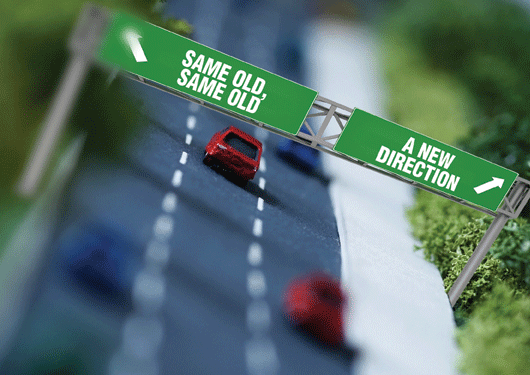
Visit Our Sponsors |
|
|
|
|
|
|
|
|
|
|
|
|
|
|
|
|
|
|
|
|
|
|
|
|
|
|
|
|
|
|
|
|
|
|
|
|
|
|

Developing a forecast using historical sales or shipment data will provide hysterical results! Why? Your company has a business plan and budget that motivates the new product, marketing and sales departments (demand creation functions) to develop market plans that are explicitly designed to change the historical data your forecast is based on! In my book on supply chain transformation, I devote a chapter to the topic.
The late Don Bowersox from Michigan State University always asked, "Why are so many people spending so much time and money trying to predict what someone else already knows?" Improving forecast accuracy begins and ends with collaboration; and it starts at home. Since you need a base to work with, the statistical forecast based on history and all of the traditional modeling techniques is as good a place as any. However, like any forecast, it's wrong.
What's different today than a year ago? New products? Competitive initiatives? Changing customer preferences or demographics? Economic conditions? Global initiatives? Dare I say it, promotional or pricing initiatives? There are probably dozens of "causal" factors driving demand variability that are bullwhipping your supply chain functions (procurement, production, distribution) to insanity. Or, at least, helping them fulfill their childhood aspirations to become firefighters.
If you're developing a forecast without collaboration with your counterparts in the demand creation functions, you're way behind. Smart companies today are modeling causal factor impacts on demand and maintaining a history to model the impact of current and planned demand changing events based on similar causal impacts in the past.
Wait, we have a sales and operations planning process in place that accounts for that. We have monthly meetings to discuss planned events and build them into the weekly forecast. Great, that's why operations gets the forecast at the beginning of the week and by noon the first day, it's all wrong! Where's the fire extinguisher?
Preaching to the choir? S&OP has been around more than 40 years? Yet, fewer than 10 percent of the companies in any given industry have systematized a daily collaborative planning process to sense (daily demand variability at the end user level), shape (adjust demand-generating factors to manage supply variability), and respond (recalculate supply chain requirement to synchronize end-to-end material flows to demand variability).
And, by end-to-end collaboration, we mean including customers and suppliers in the network, a Smart Supply Network. While most of the industry is talking about control towers and visibility, the leaders are implementing neural planning systems including channel partners and end users.
Every company goes through a transformation. Leaders do it intentionally. The rest of the market transforms unintentionally or gets voted off the island. Where will your company be in 2014?
The Outlook
In 2014, expect to see leading companies begin to apply more sophisticated technology into their forecasting and demand planning systems that will include social media trending, mobile commerce, increased inclusion of all suppliers and customers, and integrate operational optimization to re-plan, re-calculate, and re-schedule material flows to sense, shape, and respond to demand variation on a daily basis. Expect the rest of the industry to build control towers to make their errors more visible!
RELATED CONTENT
RELATED VIDEOS
Timely, incisive articles delivered directly to your inbox.






